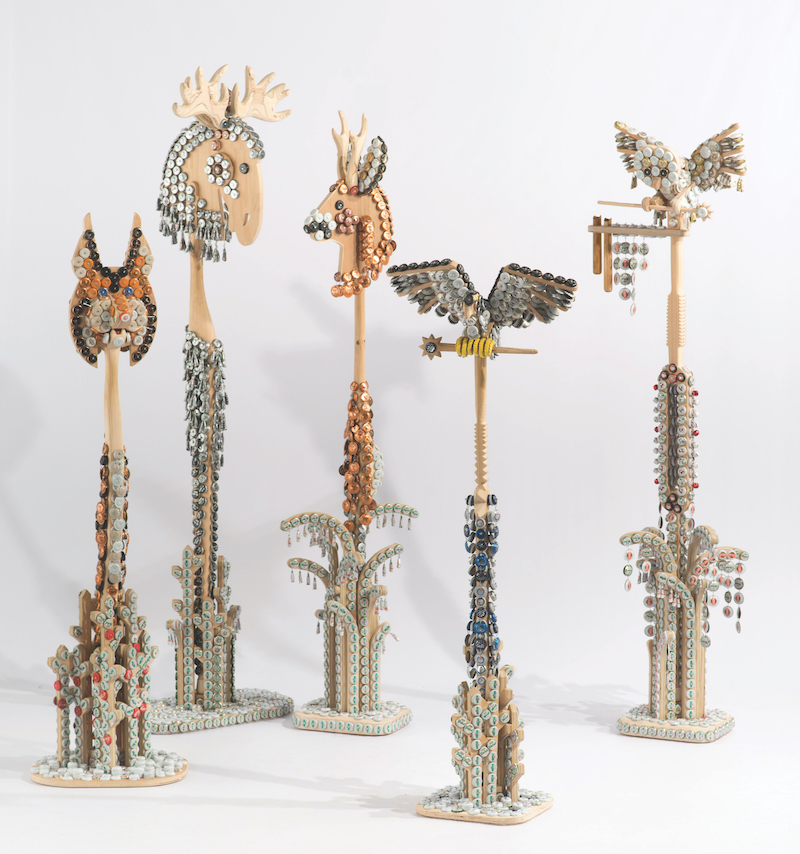“For my soul, for my sanity, I need to make stuff,” says Melbourne-based artist Jazmina Cininas, “but I’m mindful of how much stuff there is on the planet already.” To balance her creative impetus with her conscience, Cininas has developed a practice that utilises the transformative powers of art to imbue waste with an innate aesthetic value.
Working across a broad range of disciplines, the artist produces artist books, prints and lagerphones that reinterpret found objects that would otherwise have ended up in landfill. Paper ephemera and bottle caps become cultural artefacts, the intrinsic value of the every-day showcased in large installations or small, personal curios.
Embracing narratives of reinvention and hybridity, these works tie together her dedication to sustainability with her Lithuanian-Australian heritage. As the descendant of war refugees, Cininas embraces a legacy of creating a life out of nearly nothing, and seeing potential even in hopeless situations.
“The need to think creatively about how to make the most of the little at hand is a timeless lesson that transcends borders and history”, says the artist – a lesson that is all the more relevant with the political and environmental pressures the world currently faces.
“I hope my way of working helps viewers to see the possibilities in the overlooked and the forgotten,” Cininas states, “I hope they will think twice about how much they consume and what they throw away”.
By consciously working with discarded materials, the artist is reinventing the concept of what constitutes waste, and seeks to inspire her audience to look more closely at their own contributions to the ecological landscape.
Cininas presents a solo exhibition The Phoenix and the Iron Wolf at Australian Galleries, Melbourne in May 2023.

